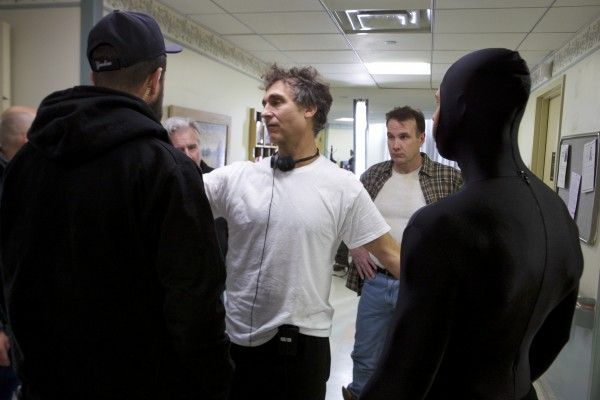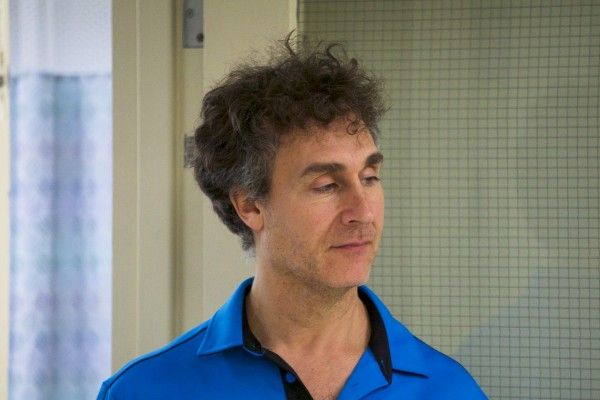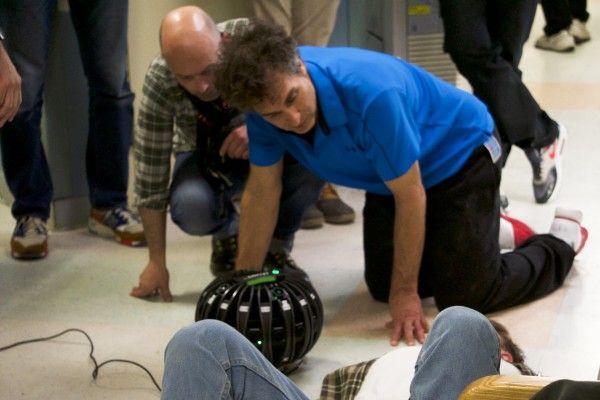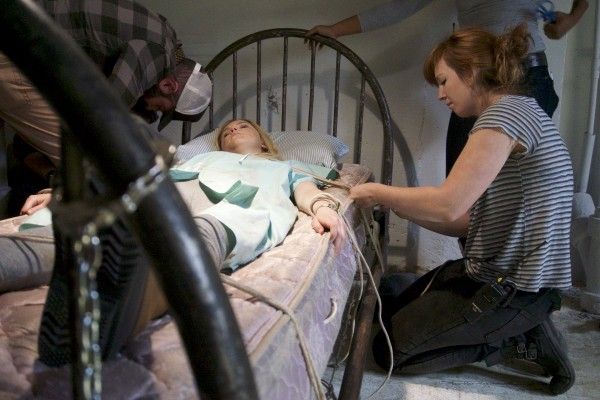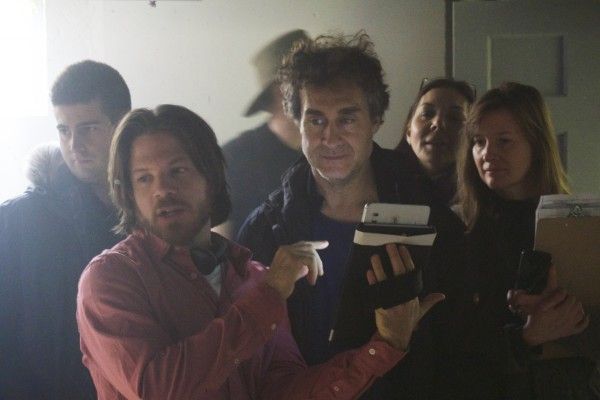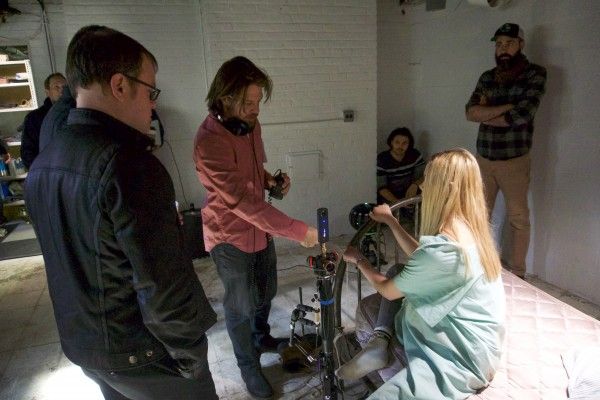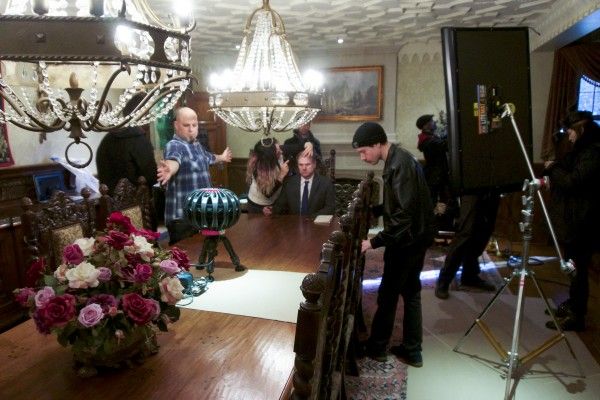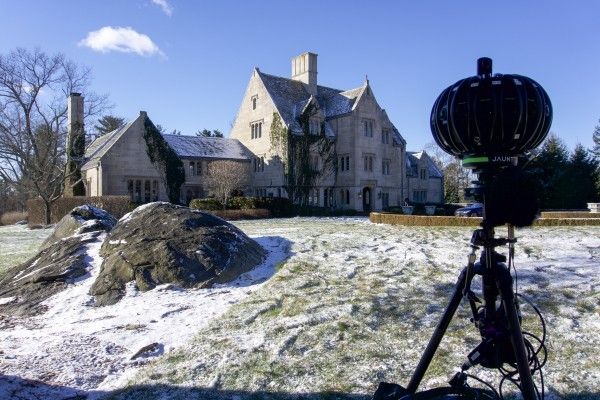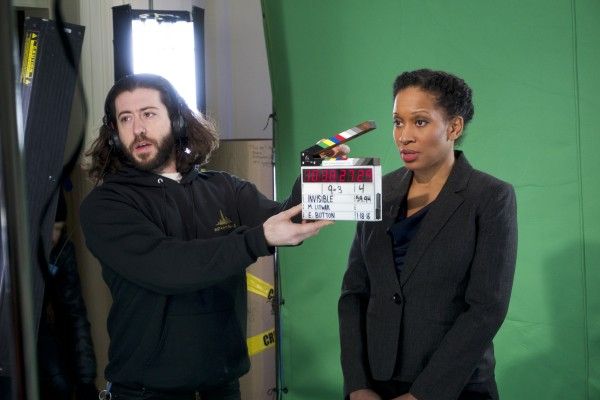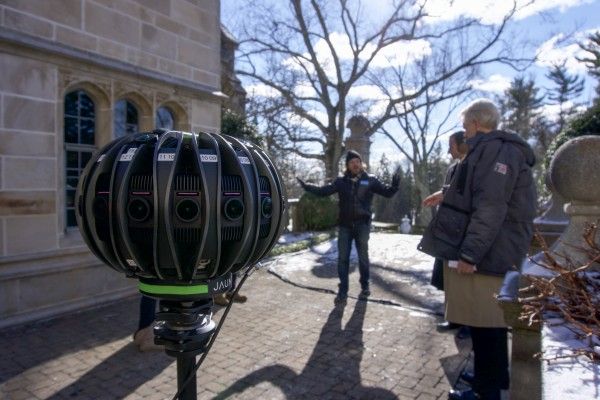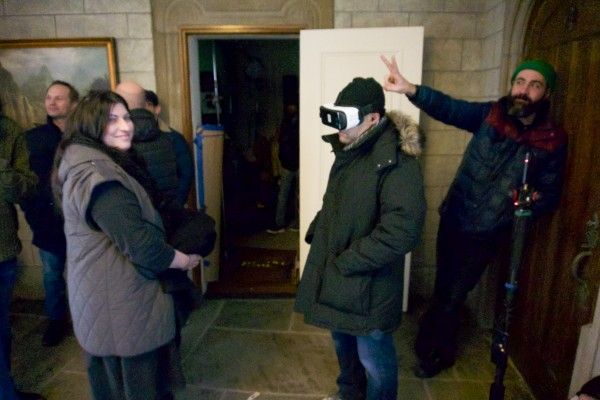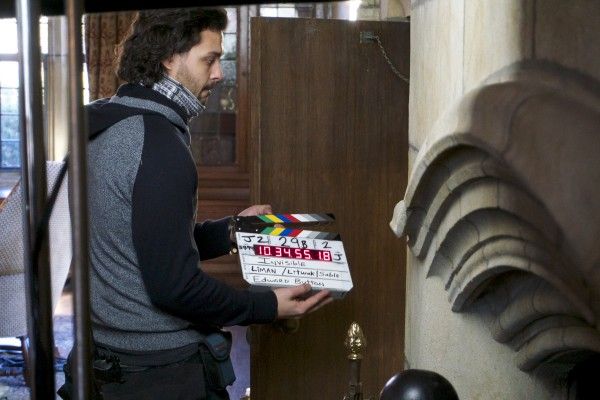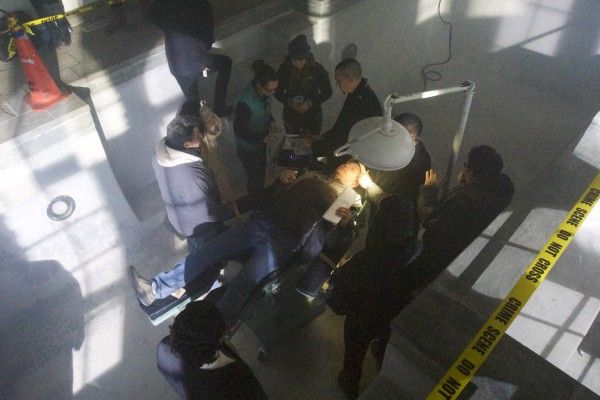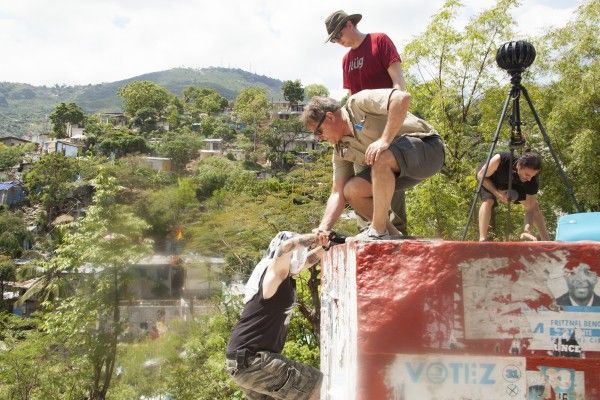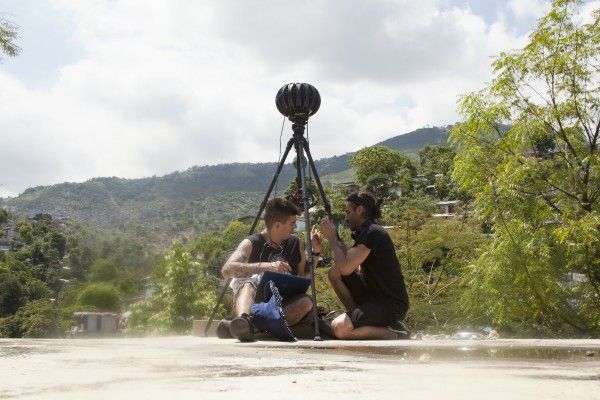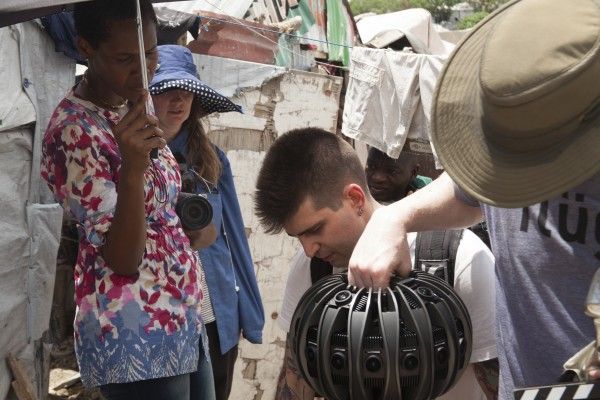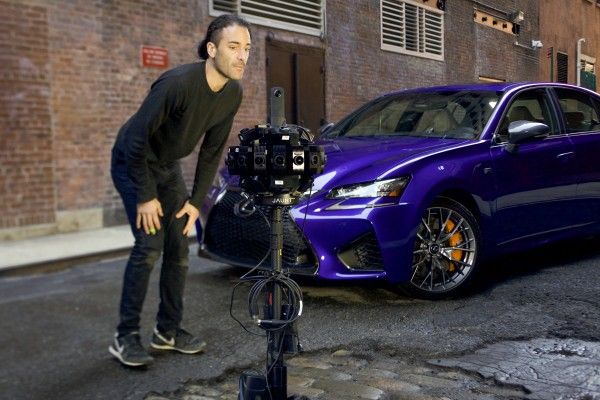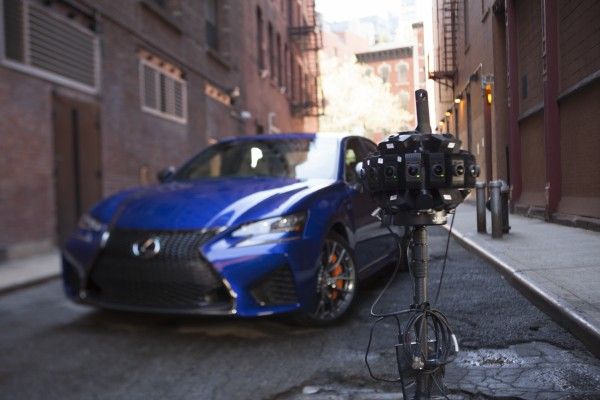One of the things that really excites me about VR filmmaking is there are no rules. The format is so new that even the best filmmakers of our time are trying to figure out ways to tell stories with virtual reality. The fact is, when you are making a traditional movie, everyone knows how to frame a story to fit on a movie screen and the audience knows how to follow along. But in VR, when the viewer can literally look in any direction at any moment, framing the action and telling a story is radically different. The director is no longer in complete control as the viewer could look up the entire time or they could decide they want to watch a specific location that would normally be off-screen during a regular film. VR forces the director to create a 360 world and the way you frame everything is entirely different.
That’s why I’m so excited about the next few years in VR. As more filmmakers start to tell stories in VR, the format will not only be an exciting place to watch content, but we’ll get to see the language of VR storytelling being written. We’re living in the dawn of an entirely new way to tell a story and it’s beyond exciting to watch.
Like I said, many filmmakers are starting to tell VR stories and that includes Doug Liman (Edge of Tomorrow, Go, Swingers, The Bourne Identity). With his first VR series, Invisible, a scripted supernatural drama series created in 360 VR, now available through Samsung VR or through the Jaunt VR app on iOS, Android, Gear VR, Oculus Rift, HTC Vive and 360° viewing on major desktop browsers, I recently sat down with the busy filmmaker to talk about venturing into the new format.
Before going any further, if you haven’t heard of the series, Invisible “tells the story of an old New York family, the Ashlands, whose tentacles reach into the largest corporations and governments in the world. Although they control a large portion of the world’s economy they exist in relative ambiguity. They move without being seen and somehow without being known. That’s because select family members have the power to make themselves invisible. The cause of their invisibility remained a mystery, until now. Ground-breaking genetic research is about to break the code and expose their secret.” The series stars Sofia Black-D’elia, Olivia Boreham-Wing, Michael Siberry, Austin Caudwell and Lewis Cancelmi.
During the interview Liman talked about how he got involved in VR, what they learned while making Invisible, the way he likes to work when making any project, his unique style of filmmaking, the future of VR, and so much more. In addition, we also talked about making Edge of Tomorrow and his plans for a sequel that he calls “a sequel that’s a prequel.”
Check out what he had to say below.
COLLIDER: Talk about how you got involved with VR and this entire endeavor.
DOUG LIMAN: Well, with Julina Tatlock we had formed 30 Ninjas and we were exploring alternative forms of storytelling, because we started talking about Go and that’s an alternative form of telling a traditional 2D movie, to tell the same story three times from different points of view. So I’ve always sort of been interested in compelling storytelling, in any form, whether it’s telling a story at the dinner table or making a movie or a TV show. But I’m also interested in different formats of telling the stories and what happens to the story when you tell it on a different format.
So when Julina and I started talking about VR I thought, “How could you tell a story in this format? What kinds of stories would lend themselves to this format, and how would it change storytelling?” So for the first moments we just started discussing VR I was extremely compelled by those questions.
One of the things about VR is that we’re at the infancy of the language, and the thing that excites me is that the reason why you’re doing it. Michael Bay is getting ready to do it, and whole bunch of filmmakers are jumping in is because you guys are sort of creating the language. Talk a little bit about how you decided the use of the equipment, how you wanted to tell the story, because the layout is all new.
LIMAN: First of all, how I chose a project in any format is: “Do I have something unique to bring to it?” Because I read a lot of script and I’m like, “This is a great script, but I’m not sure my version of the movie or TV show will be fundamentally different than somebody else’s.” And I look for projects where I feel like I bring something very specific to me, whether it’s –You know, Bourne Identity, my father’s work in Washington D.C., I would have a take on that material that’s fundamentally different than someone else’s. Or when it comes to VR where I really approach every project that I do like I’m in film school. I’m really anxious not to repeat what I’ve done before, to keep pushing and learning. That’s why I’ve never directed a sequel, because by the time I’ve finished the movie I know how to make that movie, but ideally I don’t know how to make it on day 1. And that can freak people out, especially because I’m particularly forthright and honest about that. But the first days of Edge of Tomorrow we were having a script meeting and we had the pressure of this $150 million film’s looming start date, and I’m not immune to pressure, and I snapped at Emily Blunt because I didn’t like an idea she suggested and she said, “Easy, I’ve never made a movie like this before” and I immediately countered, “Well, I’ve never made a movie like this before either” which kind of freaked out the producer. But Tom Cruise who was also at the meeting was like, Í know you haven’t, and I’m really excited to watch you figure out how to make it.”
I’ve heard stories about the way you like to work, it’s a very interesting process and I think even on the Blu-ray of Edge of Tomorrow you guys admitted you weren’t really sure about the third act, as you started it was sort of still being developed.
LIMAN: Because I’d never done anything with time travel. Trust me, you make a movie about time travel and you know for a fact humans will never travel through time. The paradoxes that come up just from trying to tell a story with time travel really illuminates the fact that it’s impossible. It will never happen. We can barely get through a movie that involves time travel.
I go into projects with a really kind of open mind and like I’m in school again and I’m gonna figure out how to tell this story, and I feel like that particular mindset really lends itself to VR because A) There are no rules, and if you do break the rules of 2D storytelling to VR, you’re going to fail. Because you can look at VR that’s shot in a more traditional format or with traditional scripts, and I don’t mean to disparage anyone else’s VR, because we did test six months before we started shooting this and we took Melisa Wallack’s first drafts of the episodes and I shot some of those scenes in VR and they were boring as shit. They just were, and it was like we could see even how you write for VR if you’re really gonna make it compelling.
I do pride myself on being my own harshest critic, I don’t believe in people sitting around the set patting each other on the back. I believe in looking each other in the face or looking each other in the eyes and going, “This isn’t gonna work. We have to do better.” VR should offer and experience that’s more exciting than watching in 2D, and we’re pretty good at 2D storytelling so the bar’s already pretty high. And the experience I was hoping to give people with Invisible was one where it’s a compelling story but you also have a sense of freedom that 2D could never give you.
There’s a shot I think in the first episode where to the right you’re seeing someone getting dragged and if you turn to the left there’s a dead body with blood all over the ground, which is jarring when you realize there’s a lot more to the story. If you’re in one place, you’re missing something else. You’re almost offering a repeat viewing, if you will.
LIMAN: It’s repeat viewing but it’s not required, films are really designed for repeat viewing. But I really tried to make the story dense enough and really think about all the details so that you couldn’t possibly pick up all the details in the first viewing and then if you watch it a second time there’ll be more to see, but you’re not required to see it a second time. With Invisible I didn’t want to create something that requires you to watch it more than once, I don’t even expect people to watch it more than once per se. I just wanted you to have the experience and knowing that if you watch it a second time I would be different because you would see different things.
I would imagine after completing the series you probably learned even more about the VR experience and the way to use VR to tell a story. Is there one lesson you learned upon completion that you’re like, “For the next one we have to do this”?
LIMAN: Well, as I said, the reason why I lent myself to VR is evaluating myself every step along the way. And so we were editing, and reshooting, and shooting, and editing, the whole way through, because I didn’t want to get to the end and go, “OK, now I know how yo do it but I didn’t do it on Invisible,” it was fix it as you go.
Isn’t that the way you work on a lot of your projects?
LIMAN: It is, that’s why I’m particularly well-suited. I didn’t want Invisible to be a proof of concept and then now you know how to do it and the next one will be good. I was like, “No, it has to be good the first time out.” We’re fooling ourselves if we actually think we know everything there is to know about scripted storytelling and VR in day 1, we’re not going to. And while that’s an attitude that I brought to my films where I argued with the head of the studio on Bourne Identity about this not being my $50 million film school, and I’m like, “Well, it is. Of course it’s my $50 million film school, you think after making Swingers and Go I know the first thing about making a $50 million action movie?”
I’m a big fan of your work and the process is amazing to me, because from what I understand you almost operate like you’re at Pixar. You do it in a very unique way for filmmaking, and the results are there.
LIMAN: There is no right or wrong way. I do know that my approach really lent itself to tackling VR because I was going to workshop it all the way through. That’s why we shot scenes six months before we started shooting, so we could shoot them, edit them, we could stitch them, and we could shoot some more material. So we had this six months of sort of learning before the first day of photography, and then from the first day of photography on we were learning every single day. And sometimes those lessons –The third day of photography where I technically wasn’t the director, because we had a group of directors and everybody was sort of consulting and brainstorming on helping each other get though their episodes because there was no institutional knowledge to learn from, we had to create our own sort of masterclass. And on day three we learned one of the tricks that we use in 2D storytelling of grouping your locations together. Once the crew is set up in a particular place, you shoot the scenes in that place but then in the garage you build a set and you get this other scene and then in the back yard you out something up. You get a bunch of other little scenes almost like little moons orbiting around the big scene, and those moon didn’t work, those scenes didn’t work because you couldn’t put a flat in it, because the audience could choose to look up at the ceiling and there’s really no way to connect that flat to the ceiling. You just look at this ceiling here, sure, and what are you gonna do, build the flat up 20 feet and try to get it to go around that air conditioning duct?
So by then end of the third day of photography we actually made plans to shut down after the fifth day if we conceived of how we were gonna do the rest of the storytelling, because the assumption we had made wasn’t right.
This is one of the learning curves of VR.
LIMAN: The other learning curve is that because the audience can look any direction, they might look at your mistakes. So there’s a level of perfection that’s required in VR that isn’t necessary in 2D storytelling where you can edit around the mistakes.
There are other tricks we learned, like it turns out that, yes, it’s a 360 degree view, but it doesn’t all have to be shot at the same moment. You can actually time shift so that if there is something that was happening, if someone choses to look this direction, and there’s something that’s happening that you don’t like or you prefer something from another take, you actually can stitch it together.
I wanna jump into a few other things, because I’ve always wanted to know this. You were your DP on Go, Swingers, and Fair Game; what was the motivation for saying, “I can’t shoot and direct anymore? Could you talk about that?
LIMAN: It depends. On something like The Bourne Identity I operated the camera the whole way through, so I basically acted like the DP, and then I had somebody there, Oliver Wood, who’s very talented and was there to back me up and handle a bunch of the logistics of it. But there’s a reason why the Bourne photography looks just like Swingers and Go. So that’s just sort of sharing the work load, because it was a much bigger movie. On Mr. and Mrs. Smith, for instance, I wanted a look that was fundamentally different than what I’m capable of accomplishing, I wanted a level of gloss that I don’t know how to shoot, so that was the decision to bring in a director of photography who knew how to do that. So I know if there’s a certain look I want, if I want it to look like Bourne, or Swingers, or Go, I shoot it myself, I’m really good at that particular look. If I want it to look like –I basically only do one look.
I really respect the fact that you understand what you’re really good at and what you need help with, and I think a lot of people they’re ego just thinks that they can do everything, so it’s refreshing that you know what your strengths are and what you can and can’t do.
LIMAN: I have an ego when it comes to tennis, I have no ego when it comes to filmmaking.
All of us at Collider just loved Edge of Tomorrow. Talk a little bit about if you had a much longer cut of that when you first put it together, or was the version that was released very similar to your assembly cut or your first cut?
LIMAN: That is the director’s cut, the cut that was released, in that it’s the cut I wanted.
I’m really curious about deleted scenes.
LIMAN: There are many deleted scenes. There was a lot of Tom and myself figuring out how to tell a story with time travel. When a character can repeat the day it’s tough to necessarily create the stakes that are required in a third act, because you can just erase it and do it over again. And in a way it followed a similar trajectory to Bourne Identity where I sort of put the story together and then went back to the beginning to re-setup the character to align the character perfectly for that journey. So in the case of Bourne Identity the last thing I shot was the opening with Matt Damon and wrote a new scene that had never been thought of, it was not on the book and was not on the original draft. But once we saw the movie we had we thought the way to set that character up is he needs to say. “How do I go home if I don’t know who I am?” and, “If I can figure out what I’m good at I’ll know who I was” and that we didn’t come up with until we had the rest of the story down.
The same thing with Edge of Tomorrow, we had a story that I was really in love with, but Tom and I went back to the opening and we conceived of how that character would be introduced to the audience. And the idea that he is a PR person who sends other people to their deaths and has no interest in going himself, was an idea that got developed after the rest of the film was down. In effect, the crazy thing about that is that I actually filmed Tom in the editing room myself. All those press interviews that are at the front of Edge of Tomorrow, even the ones were he’s composited into a panel with other people around him, Tom did his own hair and makeup, and I had a green screen hanging up in our cutting room at Warner Bros. In fact, there’s no unions involved, I’m literally just filming it where I would call over to the lighting department in Warner Bros. and be like, “Can you deliver three Kino Flos over here” and they would come over and be like, “What are these for?” we wouldn’t let them in the building and were like, “Nothing” because it’s a total union violation. I would go to the prop house and grab desks and stuff, and we just brought all of this crap into the editing room, and I genuinely love that attitude of independent filmmaking. I honestly hadn’t shot a scene where the actor did their own hair and makeup since Go.
You mentioned you’re not really interested in sequels, but Tom and Emily have both discussed that there’s ideas for an Edge of Tomorrow 2, and personally I love that movie…
LIMAN: That is the only sequel that I’m considering doing, and it’s because first of all the story is so amazing—much better than the original film, and I loved and loved the original film—and second of all, it’s a sequel that’s a prequel. I’ve had some radical ideas about how to make a sequel that would interest me, in the same way that I had ideas of how you make an independent film and then Swingers came along and it was like “Aha, that’s the perfect movie for me to test these ideas out on.” I had these intellectual ideas on how you should make a sequel that are unlike how anybody else makes a sequel, and this script and this idea fit perfectly into that idea. So it’s gonna revolutionize how people make sequels. And again, that’s why I try to do things like Invisible that are just, the revolution’s sort of built into the idea. It’s more heresy in the film world for me to pitch things that are sort of unheard of. I mean, now I’m very lucky that in my film career people expect me to sort of turn things on their head. I get hired specifically to be like, “We don’t want it to be conventional.” The exciting thing about VR is that “conventional” doesn’t even exist yet.
I think that VR is something that can be applied to a lot of stuff in the future with filmmaking, and the ability to bring VR into a bigger world, if you will. I’m just curious, how VR can be used in other ways in ways you want to use it in the future? If you had a really positive experience with VR, and you want to continue using it in the future.
LIMAN: With Invisible we accomplished everything I was hoping we might possibly accomplish in VR storytelling, and therefore I have more ideas now on how you could go further. But even if we just continue to make more episodes of Invisible, the idea of giving the viewer this experience of having control while watching a compelling, exciting story –The fact that you’re not just sitting passively there, but that you’re participating in the storytelling because you’re choosing what to look at. And it’s not as a proof of concept, because there’s a lot of VR that’s like, “Well I guess one day somebody will make a compelling story with this,” but I was like, “Can we make it today? Can this not be a proof of concept, can this be the product?” And so I’m really excited about where we go from here, because it was a really steep learning curve on Invisible, and how much we’ve grown in the course of a year, I think that the speed of which we grow will accelerate.
Which cameras did you use?
LIMAN: We used the Jaunt camera.
The 360 one?
LIMAN: Yeah, for probably 75% of the photography. And then Lewis, our third partner in 30 Ninjas who builds camera rigs. So we would conceive of shots and sometimes the Jaunt camera would make sense for it and sometimes it was like, “Ok, I’ll have to build you a rig to do that shot,” and he was designing all sorts of camera rigs, so the other 25% were kind of one-off shots that were specific arrays of cameras to do that specific kind of shot.
Obviously you’re gonna be making other movies and I’m just curious, is VR something that you’re still interested in that maybe you want to take that camera and put it like a production meeting of something you’re doing in the future, so down the road when you’re releasing a Blu-ray you can almost take people along for the ride?
LIMAN: Well we did that, on American Made, we did VR behind-the-scenes. Because Tom is actually flying an airplane in the movie, it’s not fake, he’s actually piloting an airplane in the film. And so that really lent itself to the strengths of VR, that kind of behind-the-scenes. VR for sure works in documentary, and behind-the-scenes is a perfect example of that. Invisible was the test of, “Can we make it work scripted?” because you’re more tolerant in documentary for it to look more like real life, but real life’s a little bit boring, even if Tom Cruise if flying an airplane, it’s real life. Scripted is just the good parts of real life, so with Invisible we wanted to see, knowing that it worked with documentary, could we make it work with the kind of editing and pace and excitement that we expect from scripted content, can you make that work in VR.
When you’re building an environment for Invisible, and you have a fan out there who sees the series and is like, “Wow, I would love to walk around this environment on my own,” is that something that interests you, that you can create and environment and then give people the freedom to walk around via VR? Because I think that’s a great promotional thing for a movie, that you release this VR content for, let’s say American Made, and be like, “Well, this is the set we had this in. You can go walk around.”
LIMAN: I’m not as interested in the promotional. Granted, there’s a value in promotional material, but I’m interested in doing VR that is the end product, not to promote other things. I love the ability of VR for walking around, it’s a different technology and you need different a kind of space to do it in and it has to be game engine driven. I obviously love directing actors, it’s hard to do that if you’re gonna be able to walk around. But at 30 Ninjas we’re developing other series besides Invisible, and some of those do contain game engine environments where it’s both scripted and you can walk around.


